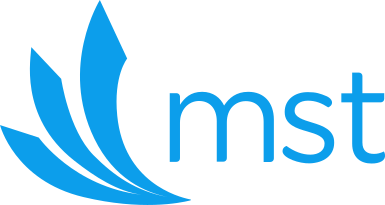Copyright legislation exists to balance the competing interests of the originators of work and those who wish to copy this work. For academic institutions, there are special options for the provision of copyrighted material. This policy is created to explain that MST and ECA will educate and maintain systems to promote copyright compliance.
MST and ECA respect the rights of copyright holders in accordance with legislation and are committed to compliance with the Copyright Act 1968 (https://www.legislation.gov.au/C1968A00063/latest/text). Both organisations are also committed to adhering to the stipulations of all statutory and contractual licence agreements related to copyrighted material.
To promote copyright compliance by staff and students.
This policy applies to all academic staff, adjuncts/sessionals, and students of MST and ECA.
MST and ECA will comply with all legislative requirements related to copyright.
MST and ECA will establish and maintain documented guidelines for material that is to be transmitted electronically to ensure academic staff and students do not breach copyright.
MST and ECA will provide the required copyright notices at each photocopier/scanner.
All copyrighted material that is transmitted electronically will have the required copyright notices included by the person copying the material.
MST and ECA will train all staff in the requirements of copyright compliance.
*This document focuses upon MST and ECA as corporate entities but considers individual responsibility within this framework. The information detailed is derived from the Australian Copyright Council (http://www.copyright.org.au/) and Copyright Agency Limited (http://www.copyright.com.au/).
Staff/Lecturer Photocopying
MST and ECA operate under systems that allow specific educational institutions to make copies of copyrighted works for educational purposes. This system involves the payment of a licence fee to the Copyright Agency Limited (CAL), which is calculated annually based upon the number of students enrolled. CAL reserves the right to conduct spot audits to ensure that MST and ECA are abiding to the terms of the contract.
Student Photocopying
MST and ECA have a duty of care to warn students that there are restrictions on the amount and type of material that can be copied. The Copyright Act gives protection from corporate responsibility for student breaches of copyright provided the prescribed 'copyright notice' is prominently displayed around each photocopier. It is, therefore, the policy of MST and ECA to prominently display the required notice over all photocopiers. This notice is available in the ‘Notices on Photocopiers and Other Copying Machines’ information fact sheet G040 from the Australian Copyright Council (http://www.copyright.org.au/).
Photocopying Limitation Guidelines
The following information provides broad guidelines for limitations imposed on copying:
| Form of Work | Standard Limits (for study, research and education-related purposes) |
| Book | 1 chapter or 10% of the number of pages |
| Journal issue | 1 article only (unless subsequent articles are identical in subject) |
Use of YouTube and Other Online Video-Sharing Platforms
The following restrictions apply to the use of material uploaded to YouTube and other online video-sharing platforms such as Dailymotion, Veoh, and Vimeo.
- The terms and conditions of each video-sharing platform will determine how the platform and its users can use the owner's material. Staff and students must abide by the video-sharing platform’s terms and conditions.
- Staff and students may need permission to use third party material (such as music and images) in videos uploaded to YouTube or other video-sharing platforms. Staff and students must research appropriately the various copyright conditions of the third-party material and abide accordingly to those conditions.
- There is no general exception for non-commercial use of copyrighted material in videos but some types of use may come under fair dealing.
Please refer to the ‘Video Uploads & Copyright’ information fact sheet G117 from the Australian Copyright Council for more information (http://www.copyright.org.au/).
Scanning into the Learning Management System (Currently Canvas)
The learning management system from a legislative point of view, is best considered as an intranet for MST and ECA. With the additional copyright provisions allowed for educational institutions, it is important that any scanned material can only be accessed by current students, faculty, staff and lecturers.
The process for scanning into the learning management system is as follows:
- Check that the level of scanning desired is within standard copyright limitations.
- Make sure that the photocopier being used supports optical character recognition (OCR). This is to enable the student to add annotations to the document in PDF format.
- When scanning a chapter or excerpt from a book, its title page and copyright information page are to be included.
- A copyright notice must be included at the front of any material copied and it is the lecturer’s responsibility to ensure this (the appropriate notice can be found on the MST-Eastern Intranet).
Storing of Websites
Currently MST and ECA store the web addresses for a multiplicity of sites through the learning management system. This practice complies with the appropriate copyright and licensing legislation. It is, therefore, MST and ECA’s policy to restrict the storing of internet sites to this process.
Copying via Computers/Video Recorders
It is possible for students to breach copyright related to audiovisual materials by copying from computers and video recorders. As a result, MST and ECA have a duty of care to display notices around such equipment warning students/staff/lecturers about copyright. Warning notices are available in the ‘Notices on Photocopiers and Other Copying Machines’ information fact sheet G040 from the Australian Copyright Council (http://www.copyright.org.au/).
Students with a Disability/Disabilities
An exception to copyright infringement applies to educational institutions and to not-for-profit organisations with a primary function of providing assistance to persons with a disability. Under section 113F of the Copyright Act, these organisations or persons acting on their behalf are allowed to copy and communicate copyrighted material in other accessible formats for the exclusive aim of helping a person/persons with a disability access material in a form that they require due to their disability; however, it must be unable to be obtained in that format within a reasonable time at an ordinary commercial cost.
